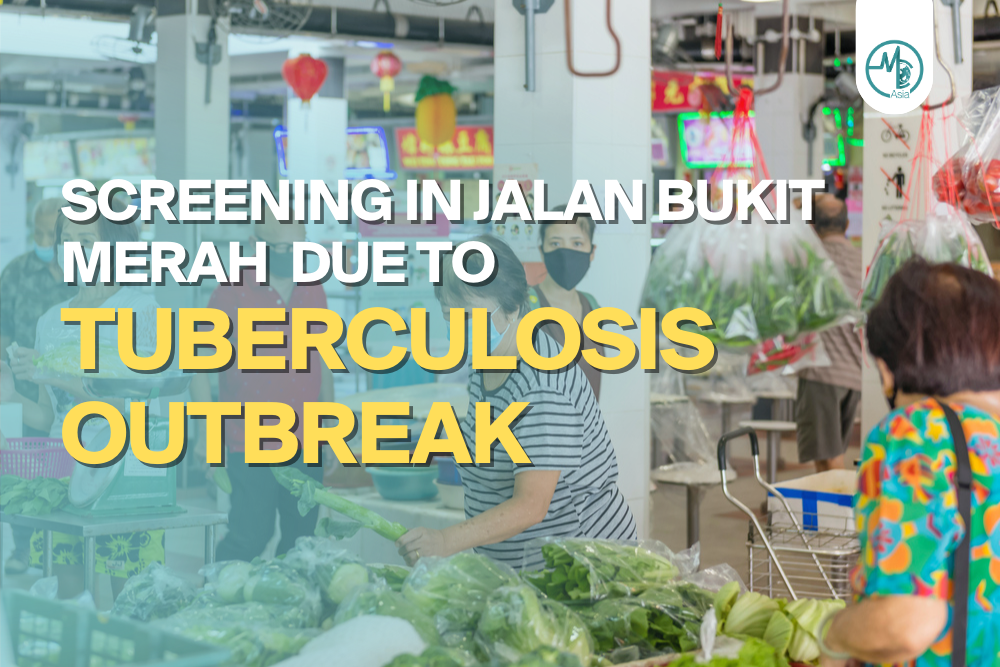The Ministry of Health (MOH) in Singapore is intensifying its fight against tuberculosis (TB) with a large-scale screening initiative in Jalan Bukit Merah.
This response comes after the detection of ten new TB cases, bringing the total to 28 linked to a cluster first identified in 2022. Approximately 3,000 individuals will undergo screening from January 11 to 15, 2024, in a bid to identify undetected active cases and prevent further transmission.
The Persistent Threat of Tuberculosis
Despite declining rates, tuberculosis remains a significant public health issue in Singapore, with 1,251 new active cases among residents in 2022. TB is an airborne disease primarily affecting the lungs and is known for its ability to remain latent in individuals for years, potentially activating later to become a serious health concern. The recent emergence of cases linked to the Jalan Bukit Merah cluster illustrates the disease’s persistent and insidious nature.
Uncovering the Cluster: A Genetic Link
The ten additional active TB cases are genetically linked to the previously announced cluster of seven cases at Block 2 Jalan Bukit Merah in 2022. This discovery was made possible through advanced genetic sequencing techniques, allowing for more accurate linkage of TB cases and enabling targeted screening and interventions. The cluster now encompasses individuals from Blocks 1 and 3 Jalan Bukit Merah, with various connections to the local market and food centre.
Screening: A Proactive Approach
The upcoming mass screening exercise, which is both mandatory for some groups and voluntary for others, represents a proactive approach to managing and curtailing the spread of TB. Mandatory screening will include individuals residing or working in specific blocks, employees at the ABC Brickworks Market and Food Centre, and affiliates of a senior activity centre in the area. Voluntary screening extends to frequent visitors of these locations and others who may have had prolonged exposure to the area.
The Complex Nature of TB Infection
TB’s complexity lies in its ability to remain latent for extended periods. While latent TB infections do not exhibit symptoms and are not infectious, there is a risk of them developing into active TB, which is contagious and can lead to severe health complications. Approximately 10% of those with latent TB infection will develop active TB disease over their lifetime, emphasizing the importance of early detection and treatment.
Treatment and Prevention
For those diagnosed with active TB, treatment involves a combination of medications over six to nine months. Patients typically become non-infectious within weeks of starting treatment, but completing the full course is crucial to prevent resistance and relapse. For latent TB, preventive treatment can significantly reduce the risk of the infection becoming active. These measures are vital in managing TB’s impact on public health.
Community Engagement and Challenges
From January 6 to 9, MOH and the National Centre for Infectious Diseases, supported by the People’s Association, will engage directly with residents and stakeholders to schedule screenings and provide information. The community’s involvement is crucial, as understanding and cooperation from those at risk are vital for the screening’s success and for preventing further spread of the disease.
Despite the comprehensive nature of this initiative, challenges remain. The MOH aims to overcome hurdles such as ensuring the participation of those at risk, managing the logistics of large-scale screening, and addressing the concerns and misconceptions about TB that may exist within the community.
Looking Ahead: A Model for Public Health Management
Singapore’s robust response to the TB cases in Jalan Bukit Merah serves as a model for infectious disease management. By combining advanced scientific techniques for disease tracking with comprehensive public health strategies, Singapore is at the forefront of combating TB. The situation underscores the need for continual vigilance, innovation in healthcare strategies, and community engagement in tackling such public health challenges.
Conclusion
The TB screening initiative in Jalan Bukit Merah is a significant step in Singapore’s ongoing battle against tuberculosis. By identifying and treating cases early, the MOH aims to break the chain of transmission and safeguard the health of the community. This proactive approach, coupled with public cooperation and the use of advanced medical techniques, is pivotal in controlling the spread of TB and ensuring the well-being of all residents. As the community prepares for the upcoming screenings, there is a collective hope that this initiative will significantly reduce the burden of TB in the affected areas and beyond.

